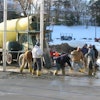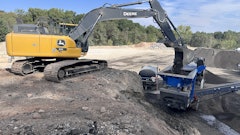More than one-quarter (27 percent) of the nation's major urban roads– Interstates, freeways and other arterial routes – have pavements that are in substandard condition and provide an unacceptably rough ride to motorists, costing the average urban driver $377 annually, a total of $80 billion nationwide.
In some areas, driving on deteriorated roadways costs the average driver more than $800 each year. Driving on roads in disrepair increases consumer costs by accelerating vehicle deterioration and depreciation and increasing needed maintenance, fuel consumption and tire wear.
These findings were released by TRIP, a national transportation research group based in Washington, D.C. The report, “Bumpy Roads Ahead: America’s Roughest Rides and Strategies to Make our Roads Smoother,” examines urban pavement conditions, transportation funding and economic development.
Additional pavement condition and vehicle operating costs for urban areas with populations of 250,000 or greater can be found in the full report and appendices.
Pavement conditions are likely to worsen under current funding by all levels of government. Through 2032, the U.S. faces a $156 billion shortfall in the amount needed to maintain roadways in their current condition, a $374 billion shortfall to make modest improvements in pavement conditions and a $670 billion shortfall to make significant improvements to roadway conditions.
A 2010 U.S. Department of Transportation report found that the nation would need to increase annual funding for road and highway improvements by 21 percent to keep them in their current condition, by 51 percent to make a modest improvement in overall conditions and by 91 percent to make significant improvement to their condition.
"States depend on investment from the Highway Trust Fund to help preserve and maintain the roads and bridges that carry our families and our economy," says Bud Wright, executive director of the American Association of State Highway and Transportation Officials (AASHTO). "We cannot continue to ignore the very real crisis facing our national transportation system without a long-term, sustainable funding source for the Highway Trust Fund."
Federal dollars are a key source of transportation funding in many states. But the lack of adequate funding beyond the expiration of the MAP-21 (Moving Ahead for Progress in the 21st Century Act) federal surface transportation legislation on September 30, 2014, threatens the future condition and performance of the nation’s roads and highways.
In the fall of 2014, nationwide federal funding for highways is expected to be cut back by almost 100 percent from the current $40 billion investment level unless additional revenues are
provided to the federal Highway Trust Fund. This is due to a cash shortfall in the Highway Trust Fund as projected by the Congressional Budget Office.
Making improvements to the transportation system can have a significant economic impact. A 2007 analysis by the Federal Highway Administration found that every $1 billion invested in highway construction would support approximately 27,800 jobs, including approximately 9,500 in the construction sector, approximately 4,300 jobs in industries supporting the construction sector, and approximately 14,000 other jobs induced in non-construction related sectors of the economy.
“With state and local governments struggling to fund needed road repairs and with federal surface transportation funding set to be slashed next year, road conditions are projected to get even worse,” says Will Wilkins, TRIP’s executive director. “Congress could reduce the extra costs borne by motorists driving on rough roads by approving funding that will support a federal transportation program that improves road conditions on the nation’s major roads and highways.”















